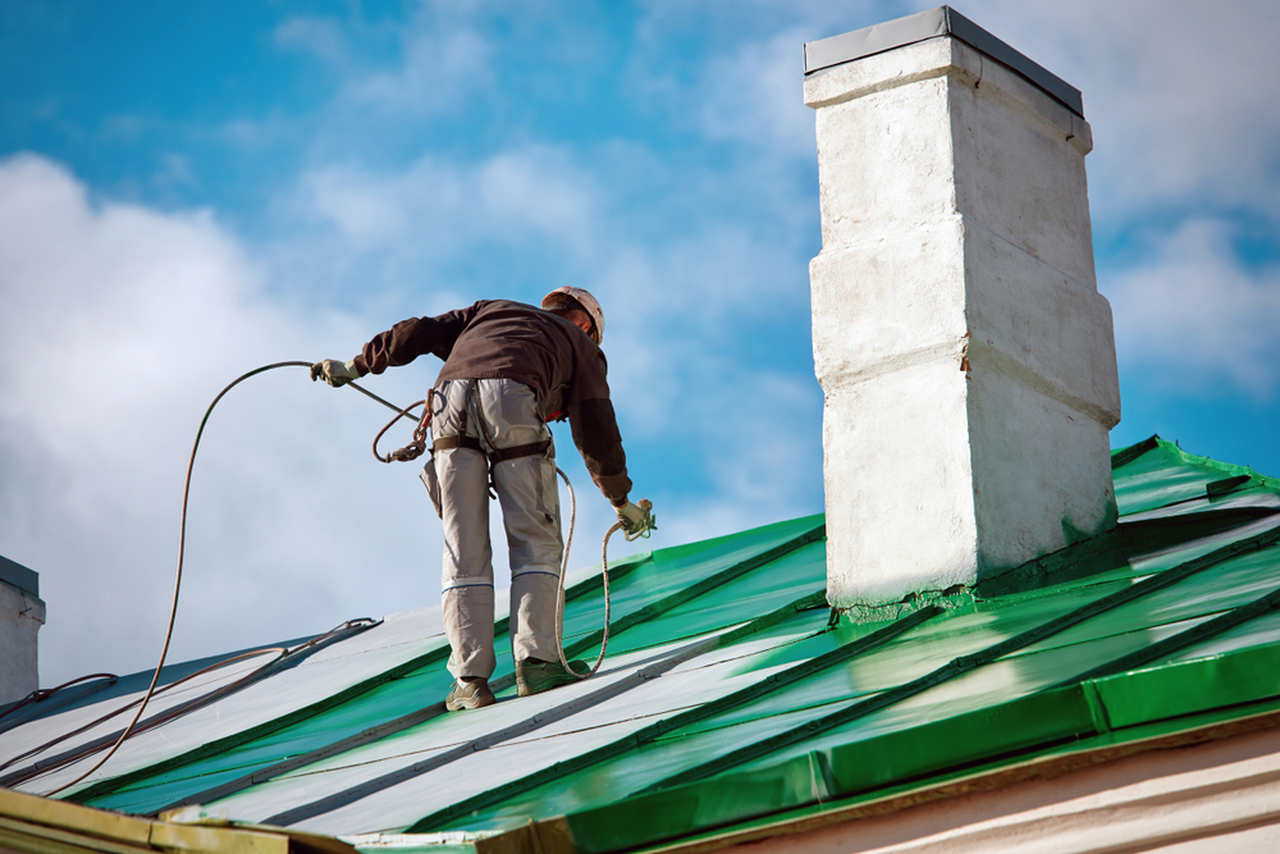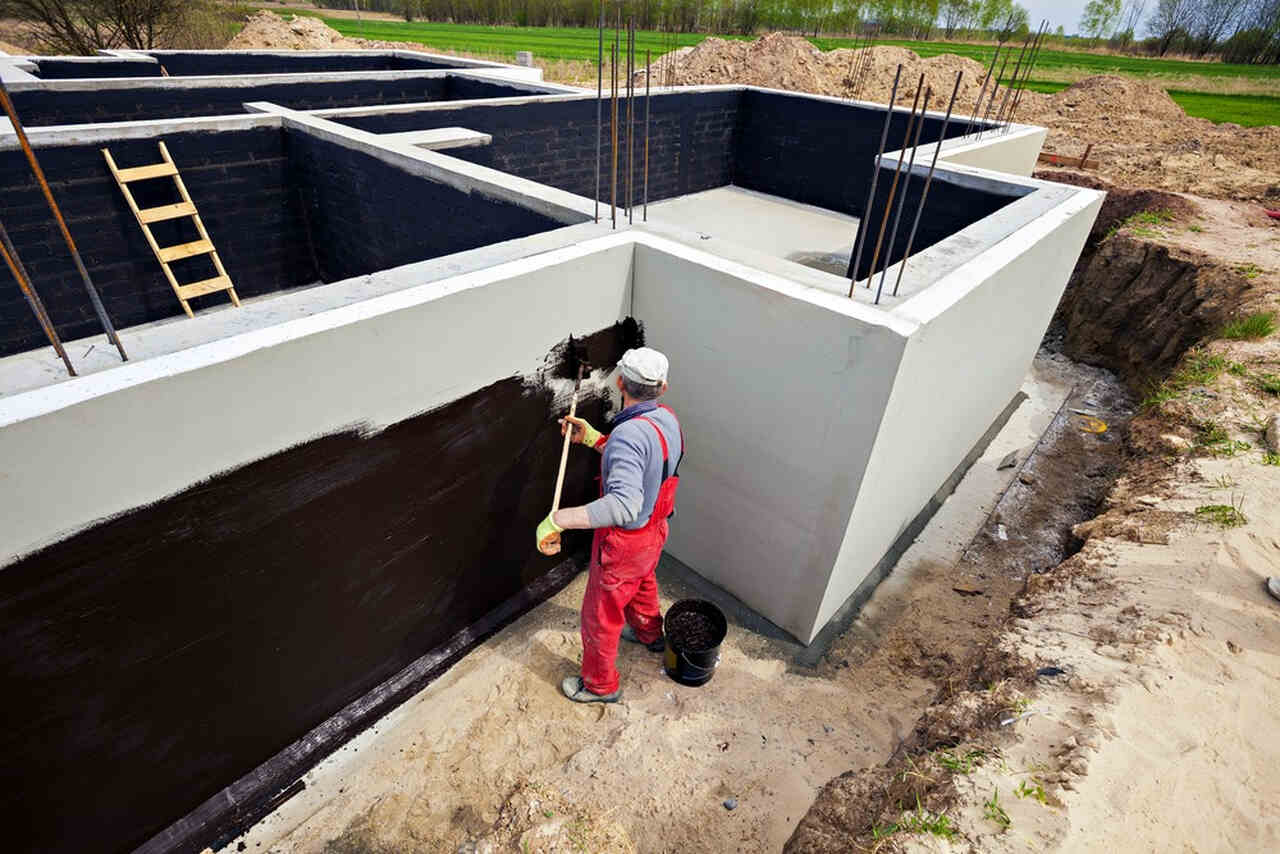Choosing the Right Drainage & waterproofing company Omaha: Red Flags and Green Lights
Exactly How Waterproofing Functions: A Thorough Check Out Techniques and Technologies
Waterproofing is vital for protecting frameworks from moisture-related damages. It entails numerous strategies and modern technologies that produce barriers versus water invasion. Conventional techniques, such as compressed clay, exist together with contemporary advancements like liquid-applied membranes. Comprehending the nuances of these approaches is essential for reliable application. The efficiency of any waterproofing service pivots not only on the methods made use of but additionally on recurring maintenance and inspection. What are the vital aspects that influence lasting efficiency?
Recognizing the Fundamentals of Waterproofing
Waterproofing is a necessary process that safeguards structures from water breach, which can result in considerable damages with time. This method includes the application of numerous products and techniques created to produce a barrier versus moisture. The main objective is to stop water from penetrating surface areas, which can cause wear and tear, mold and mildew growth, and architectural instability.Various aspects affect the selection of waterproofing technique, including the sort of framework, its location, and ecological problems. Recognizing the physics of water movement and the residential properties of different products is vital in picking an effective waterproofing solution.Effective waterproofing not just safeguards structures yet additionally boosts their long life and stability. Normally, it is incorporated right into the design stage of construction to guarantee thorough protection. As recognition of water-related concerns expands, the importance of comprehending waterproofing principles ends up being progressively clear to architects, home builders, and home owners alike.
Traditional Waterproofing Techniques
Standard waterproofing approaches have actually been utilized for centuries, depending on reliable strategies and products to secure frameworks from water damages. Among the oldest techniques includes the usage of clay, which, when compressed, develops a natural barrier against moisture. Additionally, asphalt, a sticky, black product stemmed from oil, has actually been utilized for its water-resistant residential properties, typically applied to roof coverings and foundations.Another method includes the application of lime-based plasters, which offer a breathable layer that allows moisture to leave while protecting against water access. Thatch roof, a conventional technique still seen in some cultures, offers outstanding waterproofing as a result of its securely loaded straw layers.Moreover, making use of rock and brick has been famous, as these materials are naturally immune to water when correctly set up. In general, conventional waterproofing techniques stress the importance of choosing ideal materials and building practices to improve durability versus water breach.
Modern Waterproofing Technologies
Developments in contemporary waterproofing modern technologies have actually transformed the means structures are protected from water damages. Cutting-edge approaches such as liquid-applied membranes and sophisticated sealers have actually boosted the effectiveness and flexibility of waterproofing remedies. These technologies allow for seamless application, minimizing the danger of leakages and making certain detailed coverage over complex surfaces.Moreover, the integration of smart technologies, such as moisture sensors and automated surveillance systems, makes it possible for real-time analysis of waterproofing performance. This positive strategy facilitates timely upkeep and lowers long-term repair service costs.Additionally, developments in spray-applied coatings supply quick application and exceptional attachment, adjusting to numerous substrates while giving robust security. Methods like polymer-modified systems better enhance flexibility and sturdiness, making them appropriate for diverse environments. Overall, modern-day waterproofing modern technologies not just reduce water breach yet likewise add to the long life and sustainability of frameworks, noting a considerable change in the industry.
Materials Used in Waterproofing
The efficiency of waterproofing services heavily relies on the materials utilized in their application. Various products are used to develop barriers against water ingress, each with distinct buildings fit for different atmospheres. Typically made use of products include membranes, finishes, and sealants.Liquid-applied membranes, often made from polyurethane or acrylic, form a seamless barrier that adapts to complex surfaces. Sheet membranes, generally constructed from rubber or polycarbonate, offer durability and are suitable for larger areas. In addition, cementitious waterproofing materials, made up of cementitious substances, offer superb adhesion and flexibility.Sealants made from silicone or polyurethane are necessary for joints and seams, ensuring detailed defense. Innovative materials, such as geo-composite membranes, combine several functions, boosting efficiency. In general, the choice of waterproofing products is crucial in accomplishing resilient and effective water resistance, tailored to details task needs and environmental conditions.
Typical Applications of Waterproofing
Waterproofing plays a crucial role in various markets, ensuring the longevity and integrity of structures. Common applications include domestic options that shield homes, business framework that safeguards businesses, and industrial settings that call for durable defense against wetness. Recognizing these applications highlights the importance of waterproofing in preserving both safety and security and capability across various environments.
Residential Waterproofing Solutions
Numerous home owners encounter challenges with moisture breach, making effective property waterproofing services important. Numerous approaches exist to resolve this problem, including inside and outside waterproofing systems. Inside solutions frequently entail the application of sealants and finishings to cellar walls, which help prevent water infiltration. Outside methods generally consist of the setup of drain systems and water resistant membranes that divert water far from the foundation.Additionally, house you could try here owners may consider sump pumps to eliminate water accumulation and dehumidifiers to manage humidity levels. Appropriate grading and making use of gutters likewise play an essential function in handling water flow around the home. By executing these techniques, homeowners can greatly reduce the risk of water damages and mold and mildew growth, ensuring a completely dry and risk-free living environment.

Industrial Framework Defense
Effective waterproofing remedies play a vital duty in the defense of business framework. Water Solutions Omaha. These techniques are necessary for safeguarding structures, parking structures, and bridges from water damage, which can endanger structural honesty and cause expensive repairs. Usual applications consist of the installation of membrane layers, layers, and sealers that produce barriers versus wetness infiltration. Locations such as basements, roofs, and outside wall surfaces are typically prioritized to assure durability and resilience. In addition, waterproofing systems can improve power efficiency by stopping water-related problems that may bring about mold development and damage. By carrying out robust waterproofing measures, home owners can protect their financial investments and keep operational effectiveness, ultimately adding to the total sustainability of commercial facilities
Industrial Applications Review
While various industries face special obstacles, the demand for reliable waterproofing solutions stays a constant in industrial applications. Industries such as production, building and construction, and power frequently come across settings where moisture exposure can endanger structural integrity and functional performance. In making centers, waterproofing is essential for protecting equipment and materials from water damages. In building, it safeguards structures and basements versus groundwater infiltration. The power sector depends on waterproofing for the security of devices click here now in hydroelectric plants and overseas structures. Furthermore, food processing sectors make use of waterproofing to ensure hygiene and conformity with safety standards. Overall, reliable waterproofing options are necessary for improving resilience, safety and security, and performance across various commercial setups.
Maintenance and Longevity of Waterproofing Solutions
Although waterproofing services are designed to offer lasting security against moisture breach, routine maintenance is necessary to guarantee their effectiveness and long life - Water Solutions Omaha. Regular evaluations play a significant duty in identifying possible problems such as splits, peeling off, or indicators of water damage. Resolving these problems immediately can protect against further degeneration and pricey repairs.Additionally, cleaning up the surface area of waterproofed areas aids eliminate dirt and particles that can jeopardize the stability of the waterproofing obstacle. It's likewise recommended to reapply protective finishings or sealants as suggested by manufacturers to preserve excellent performance. Ecological variables, such as UV direct exposure and severe weather, can affect the life-span of waterproofing products, making regular evaluation crucial
Regularly Asked Questions
Can Waterproofing Be Applied in Cold Weather Condition?
The inquiry of using waterproofing in winter increases issues regarding bond and treating. Numerous products may not carry out at their ideal in reduced temperature levels, demanding careful selection and factor to consider of details standards for effective application.
For How Long Does Waterproofing Generally Last?
The duration of waterproofing effectiveness differs based upon materials and environmental factors. Generally, it can last from wet basement repair five to 10 years, yet normal upkeep and inspections are important to assure peak efficiency and durability.
Is Do It Yourself Waterproofing Effective and Safe?
The performance and safety and security of do it yourself waterproofing depend on various elements, including material top quality and application strategy. While some people accomplish satisfactory outcomes, others might encounter issues that endanger lasting security and structural honesty.
What Are the Signs of Failing Waterproofing?
Signs of falling short waterproofing consist of visible water stains, peeling paint, mold growth, musty smells, and wetness in walls or ceilings - Sump pump installation & replacement Omaha. These indicators suggest compromised barriers, necessitating prompt evaluation and possible removal to prevent more damage
Just how Do I Select the Right Waterproofing Contractor?
